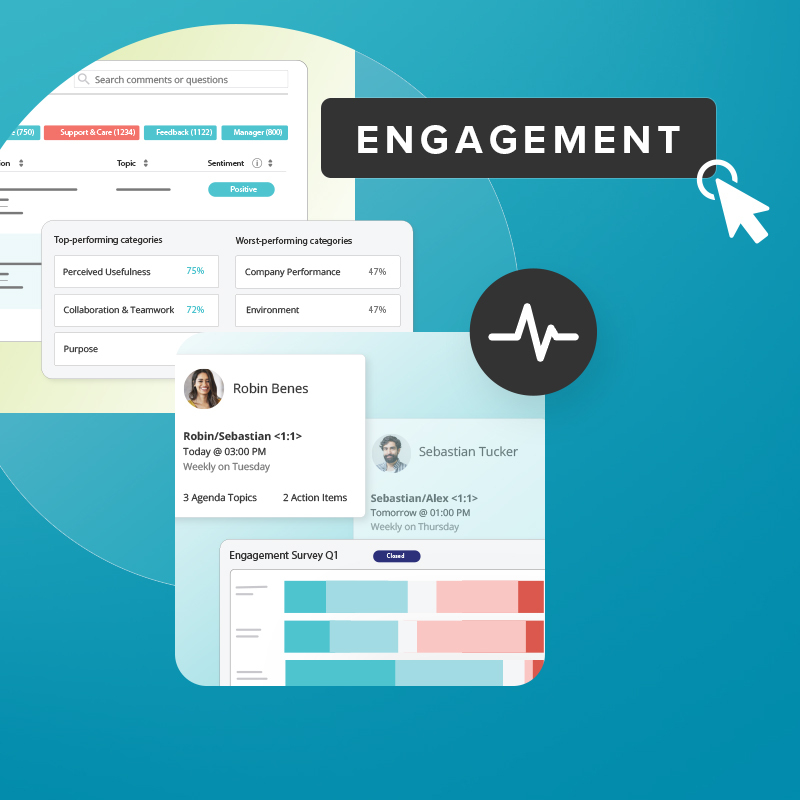As we’re all sitting at home managing work from our sofas, kitchen tables, home offices, or really wherever the kids aren’t right now, we’ve had to learn new ways to manage our work and home lives. Because of this shift, Objectives and Key Results (OKRs) have become increasingly important, since we have less visibility in the organization, and far fewer impromptu conversations in the hallway where you might get a key piece of information. With an increased reliance on OKRs, it’s important to make sure we’re actually measuring the right stuff.
“What’s the best Key Result you’ve ever seen?”
I’ve been asked this question more times than I can count… What makes a key result great? What was the context? What was the need it served? It’s impossible to even know the best key result I’ve seen, because it could have occurred anywhere in the organization, at a point in time where that information was critical. What I do know is how to determine what a great KR is. In my career, the single most important feature that any great KR has is… available data. You would think data availability is a relatively low bar, but this can be the biggest hurdle when determining what you are going to measure. You can’t measure what you don’t have, but frequently there will be another KR that would work as a proxy for whatever you are trying to measure anyways.
Every organization has an abundance of data, the challenge is finding what is the right data to use as a measure. Once you’ve grabbed your list of available measures, there needs to be some way to filter the list down the optimal group. This is where I like to use a concept called signal strength. Think of the WiFi bars on your computer or data connection on your phone – they tell you what the strength of your device’s connection is; an indicator of how fast you can download, or even how far you are away from the source (router or cell tower). Applying this concept to business, we can measure the signal strength of KRs using 5 different criteria:
- Relevancy – How closely related is the indicator to actual performance across normal scenarios?
- Predictability – Does a shift in this measure predict the future performance of the target area?
- Auditability – Can an independent third party assess the accuracy of this measure?
- Comparability – Is the data collected from a process that is repeatable across locations/ products?
- Vivacity – Does the measure inspire, engage, and allow for team/individual contribution?
The reason those 5 criteria are important is they solve the need of KRs – is the KR relevant to the objective, can we rely on its values, will others believe us, can it highlight comparisons, and does it inspire us to hit those goals. Once you score your potential KRs on each of the above criteria (generally from 1 to 5), you get a distribution indicating which are the great KRs, and which ones maybe aren’t so great.
Don’t be worried if your favorite KR doesn’t have a high signal strength – a KR may have a weak signal strength for one objective, but a strong signal strength for another. You can always check if your KR fits in better with another objective. That being said, successful OKR systems have as few KRs as possible provided they cover the essence of what you’re trying to achieve. So if your favorite KR doesn’t make the cut, be happy that you’ve improved the business!
There are of course cases where you don’t have any high signal strength KRs. The good news is that a few lower signal strength KRs can usually act as a proxy until you have the data for a better KR. Don’t let your OKR solution be held ransom for “a better KR” – use the highest signal strength ones and allow your team to surface better KRs once they begin using the OKR solution.
One KR that we see companies wanting to track is NPS (Net Promoter Score). This could be internal or external NPS, but either way it can be difficult to collect the data. A proxy that these organizations collect instead is the number of complaints received. The idea being: if the number of complaints goes down, there’s a pretty good chance people are happier with your product.
So what makes a great KR? A great KR is one that is available, and scores highly on the 5 criteria of signal strength. What’s the best Key Result I’ve ever seen? Call me up and I’ll tell you my favorite for this week.



